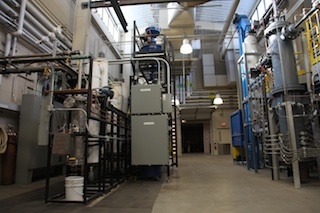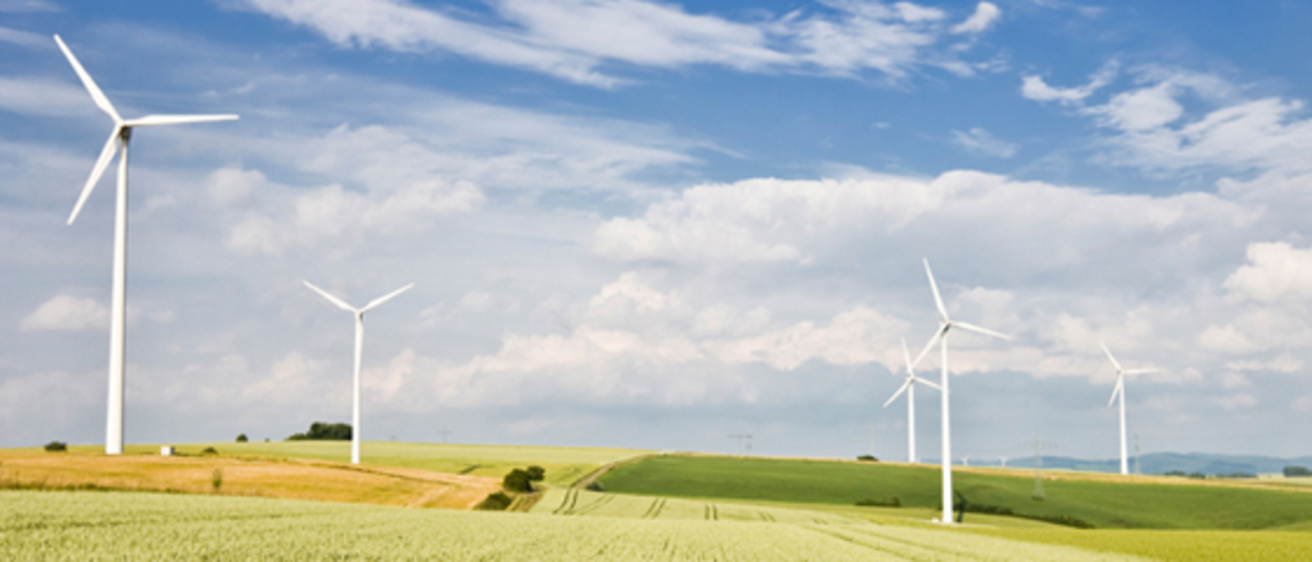Academic and industry leaders will join state lawmakers and economic development officials at an annual meeting on Tuesday, July 31, to learn about progress in Iowa’s push to create new renewable energy technologies and to raise public awareness about reducing energy use.
The Iowa Experimental Program to Stimulate Competitive Research (EPSCoR) program is a $20 million initiative sponsored by the National Science Foundation (NSF) to spur Iowa’s research enterprise and competitiveness nationally. Launched last year, the effort is predicated on innovative research in four areas: wind energy; using biomass to produce electricity; a campaign to educate the public how to use less energy; and energy policy.
The state-run Iowa Power Fund kicked in $2 million for the EPSCoR initiative to trigger the NSF funding. The five-year program involves partnerships with Iowa’s three public universities, industry, private and community colleges, school districts, and government agencies.
Boosting Iowa's profile
The all-day meeting, to be held at the Iowa Memorial Union, will feature updates on research in wind energy, biomass-to-electricity, and energy use and policy. There also will be a poster session featuring student work in these areas and a keynote address by Earnestine Baker of the University of Maryland-Baltimore County on increasing minority participation in science, engineering, and mathematics.
Iowa is banking that its expertise in wind energy and biomass conversion will make the state competitive in the renewable energy arena nationwide.
The Hawkeye state is blessed with wind resources: It is ranked second nationally in the percentage of electricity derived from wind (behind South Dakota) and second in wind energy production (behind Texas), according to the American Wind Energy Association. The state also is home to several manufacturers for wind turbines and parts.
Thanks in large part to its leading role in corn-based agriculture, Iowa also has a vibrant research and development sector devoted to biomass production.
Biomass to electricity
Robert C. Brown is leading the EPSCoR team’s research into biomass. While much of biomass, or plant matter, research revolves around new ways to turn it into fuel, EPSCoR researchers in Iowa want to figure out how to turn it into electricity.
“Frankly, there are very few places in U.S. that are working on biomass-to-electricity research,” says Brown, director of the Bioeconomy Institute at Iowa State University and project director/principal investigator for the Iowa EPSCoR project. “There is an opportunity that hasn’t been fulfilled nationally. And, we have a tremendous base of biomass.”

To succeed, researchers are looking at different methods to convert biomass to electricity, including gasification (which turns biomass into a gas), pyrolysis (which use heat to turn biomass into liquid), and torrefaction (which roasts the biomass into a coal-like solid). The various techniques are being researched and tested at the three public universities and partner institutions with the goal of substituting them for coal in existing power plants.
“We want to convert biomass into fossil fuel equivalents to make them more compatible with existing power plant infrastructure we have in the U.S., rather than building new infrastructure,” Brown says.
Wind and conservation
In wind energy, researchers want to use advanced engineering principles to improve the design and reliability of wind turbines. The EPSCoR program includes plans to build an outdoor laboratory to collect reliable wind speed and turbulence data to better understand how wind flows through and around wind turbines. Researchers also plan to refine turbine blades to improve their performance and reliability as well as to modify the turbine’s main generator, the drivetrain.
Another plank to the EPSCoR program is changing how people view energy use. Mary Losch, assistant director of the Center for Social and Behavioral Research at the University of Northern Iowa, says she and colleagues are devising a campaign in two medium-sized Iowa communities to raise awareness about reducing residential energy consumption and saving money as a result.
“Basically it’s akin to an advertising campaign, but it’s related to a specific behavior rather a specific product that we’re selling,” says Losch, a psychology professor. “We’re interested in changing people’s behavior in regard to home energy use.”
